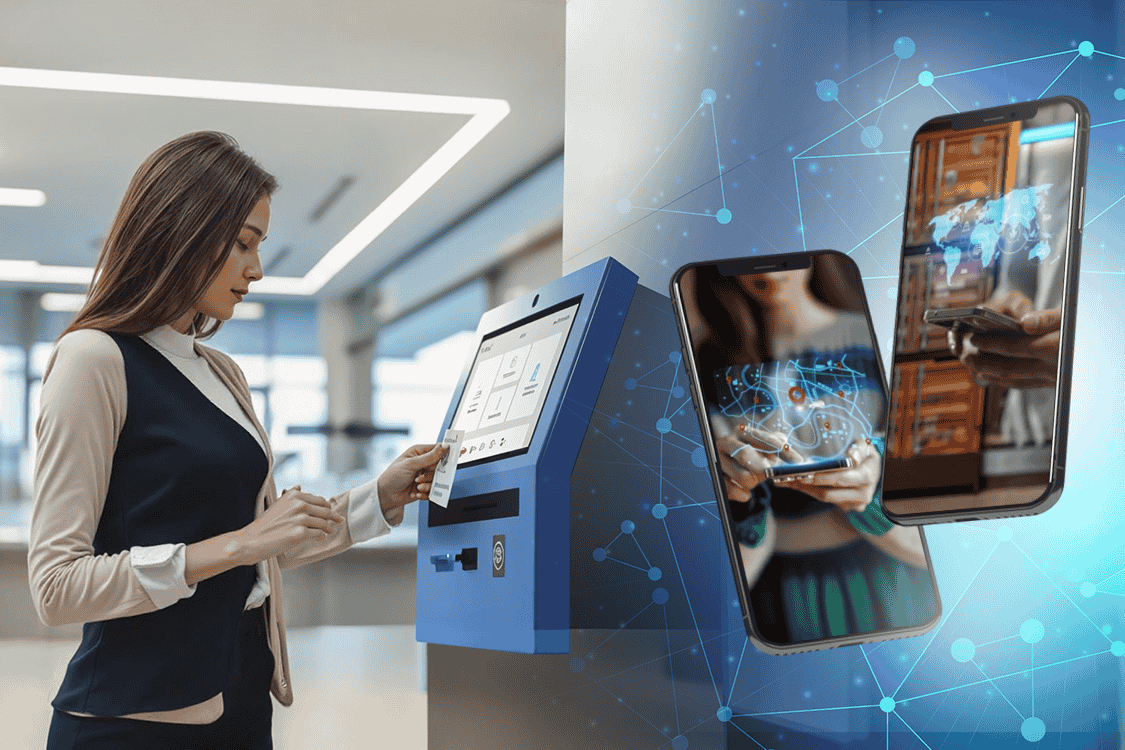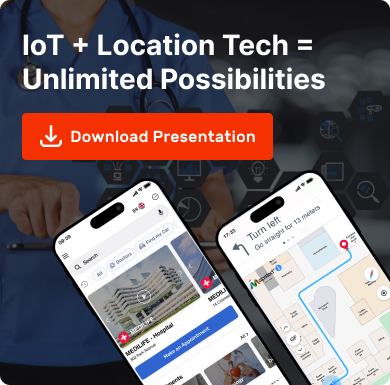IoT Solutions

Making workplaces safe isn’t all about installing cameras or hiring more guards. The challenge, as always, is to avert incidents before they occur and respond instantly when they do. This is where IoT visitor management systems (VMS) come into play.
Conventional visitor management systems do a good job of recording the entries/exits of visitors, but they often lack advocates for real-time intervention. IoT is shifting that dynamic with the integration of location tracking, automated access control and emergency response capabilities, giving businesses a proactive — rather than reactive — approach.
In a real-world environment where workplace incidents, injuries and violence can pose serious threats, companies using the IoT are witnessing measurable progress. According to a Deloitte report, workplaces that utilize IoT for worker safety have decreased workplace injuries by 10-20%. That’s not simply an operational upgrade — it’s a direct enhancement in employee well-being.


When you don’t invest in safety — It’s the price of inaction.
Two tragic cases demonstrate why real-time monitoring and emergency response are essential components of workplace safety:
- Xcel Energy Cabin Creek Fire (2007) — At a hydroelectric plant in Colorado, a fire ignited in a long, confined tunnel where workers had been applying epoxy coatings. The flames blocked the only exit and trapped five workers deep inside. Because of the complex tunnel system and dangerous conditions, rescuers were not able to reach them in time. Tragically, all five workers asphyxiated before they could be rescued.
- Neom Construction Incidents (2024) — Hazardous working conditions leading to accidents, some fatal, have been reported in Saudi Arabia’s controversial mega-project Neom. The sprawling and intricate construction site has complicated efforts by emergency responders to quickly find and assist workers, they said, leading to deaths that could have been prevented.
These two tragedies could have had a better outcome if real-time location tracking and emergency alert systems existed. IoT visitor management systems could have tracked trapped workers’ whereabouts and issued instant distress signals, enabling rescuers to respond more quickly.
How Does IoT Take Visitor Management Beyond a Logbook?
Often, a visitor management system traditionally keeps an eye on who enters a facility and where they go. However, through the use of IoT visitor management systems, security risks can be actively prevented, criminals can be tracked in real-time and emergency responses can be enhanced.
Here are a few of the benefits of IoT in workplace security:
- Geofencing blocks access — Limiting access to dangerous or restricted areas
- IoT smart badges improve employee safety — One click SOS alerts.
- Workplace violence – Monitor in real time – Detect early and intervene quickly.
- Make theft and misusing of your property rare –Tracking your valuable assets ensures essential equipment does not wander away.
These aren’t just features that make workplaces more secure; they make workplaces smarter, safer and more efficient.
How to Use IoT Geofencing to Prevent Access in Hazardous Zones
Certain locations within a workplace—factory floors, data centers or chemical storage rooms—should not be accessible to everyone. Data breaches, accidents or even theft can occur due to unauthorized access.
Using patented IoT-powered geofencing technology, such as that of location intelligence leaders like Mapsted, you can establish virtual geographical boundaries that are only entered by authorized personnel. And if someone with the wrong access attempts to enter, the system will automatically deny them entry and alert security.
Access control like this can help prevent serious injuries. Access control helps reduce workplace injuries, already down by as much as 20% in companies using IoT — stricter access control can help push that figure even further.
As an example (consider an industrial plant), maintenance workers might need temporary access to a hazardous zone. They can then be given access for a predetermined amount of time with an IoT-enabled VMS. Once they’ve completed their task, their access is automatically revoked — reducing risk and keeping you compliant.
Monitoring Employee and Visitor Safety in Real Time
Workplace emergencies aren’t only fires or machinery accidents. Workplace violence is on the rise: there were 392 workplace homicides and 37,060 workplace nonfatal injuries due to intentional harm in 2020.
Workplace violence is on the rise: there were 392 workplace homicides and 37,060 workplace nonfatal injuries due to intentional harm in 2020.
The one thing most companies have in common on their list of priorities when it comes to improving workplace safety through IoT, though, is the addition of Mapsted smart badges into their IoT-enabled smart visitor management solutions. These badges enable employees and visitors to:
- Send immediate SOS alerts if they are in trouble
- Track them in real-time if they’re in a hazardous or restricted area.
- Send automatic responses for prolonged inactivity within a given time frame.
This is particularly important in high-risk fields, such as healthcare. Healthcare workers made up 73 percent of all nonfatal workplace violence injuries in 2018. If a nurse or doctor is assaulted, they can tap their smart badge to notify security in real time.
At facilities where workers are isolated — such as in warehouses, research laboratories or manufacturing plants — this system is designed to ensure that should something go wrong, help comes quickly.
Imagine if something could protect against workplace violence.
“There is no one workplace that is safe from violence. Whether it’s a fight between two employees or a strike from an outsider, security teams have to shoot them before they escalate.
When faced with imminent dangers, employees can discretely push an SOS button with an IoT-enabled Mapsted Badge. Security teams are instantly alerted, with the location of the person, to respond without delay.
This system is invaluable in situations where tensions can escalate quickly, such as:
- Hospitals, where families of patients sometimes take out their anger on medical personnel.
- Corporate offices are where workplace disputes can become physical.
- Retail outlets where aggressive customers threaten employees.
- Providing an easy way for employees to call for help ensures that situations don’t escalate into incidents.
Use Real-Time Location Tracking for Faster Emergency Evacuations
When an emergency occurs — a fire, gas leak or other security threat — knowing who remains inside a building can be a matter of life and death.
Existing evacuation plans depend on manual headcount, which is slow and often inaccurate. IoT visitor management systems solve this problem with the following:
- Tracking who is still inside in real time so that the security force knows the accurate location and headcount.
- Sending out automatic alerts with exit directions.
- Assisting in locating people in distress instantaneously by first responders.
For instance, in case of a hospital fire, keeping track of patients, staff and visitors is vital. Once an IoT-enabled smart visitor management system is in place, security teams know exactly where people are and how to make sure those needing assistance in the utmost have it first.
Smart Asset Tracking to Reduce Theft and Loss
A great example of IoT visitor management systems features is its ability to track other assets in addition to people. The missing or theft of high-end hardware, medical equipment or confidential documents is a major risk. Mapsted’s asset-tracking technology also guarantees that:
- Equipment stays in marked zones.
- If assets are moved without authorization, alerts are triggered.
- Lost items are recovered in the fastest way.
For instance, if a guest mistakenly (or purposefully) takes an office laptop out of a secure area, the system can identify this and alert security before the machine exits the premises.
Visitor Management That Makes Sense to You Is No Longer a Wishful Thinking
As workplace risks evolve, organizations require more than conventional security mechanisms. Enterprise Predictions Companies are utilizing IoT for safety and they can already see workplace injuries down 10-20% (Deloitte) because smarter solutions mean safer environments.
Scaling up the standards of workplace security, IoT visitor management systems can prevent unauthorized access, respond to emergencies faster or track valuable assets in the company.
Conclusion
So, how do visitor management systems improve workplace safety? Businesses that are investing in new technologies like Mapsted’s IoT visitor management systems and solutions like geofencing, smart badges and asset tracking are enhancing security and empowering employees and visitors in ways that simply were not feasible before.
As the Internet of Things (IoT) continues to advance, so will the systems themselves — expect systems that can predict risks before they occur. However, one thing is for sure: workplace safety has evolved beyond responding to incidents to preventing those incidents in the first place. If you found this blog helpful, please read our blog on Mapsted’s IOT Solutions for Businesses – Use Cases or watch our video on Discover Mapsted’s New IoT Division | Transform Your Operations Today to learn more.
Frequently Asked Questions
Q1: How does IoT improve workplace safety?
A: It prevents unauthorized access, keeps track of movements, allows SOS alerts and accelerates emergency response.
Q2: Can IoT prevent workplace violence?
A: Yes, smart badges with SOS alerts enable employees to summon help instantly, which enables quick intervention.
Q3: What is geofencing in visitor management?
A: It uses virtual barriers to prevent unauthorized access and notify security in sensitive areas.
Q4: Which industries benefit most from IoT-based visitor management?
A: Healthcare, construction, manufacturing, corporate offices and retail.
Q5: How does IoT help in emergencies?
A: People inside are identified, evacuation alerts are sent out and responders are guided.
